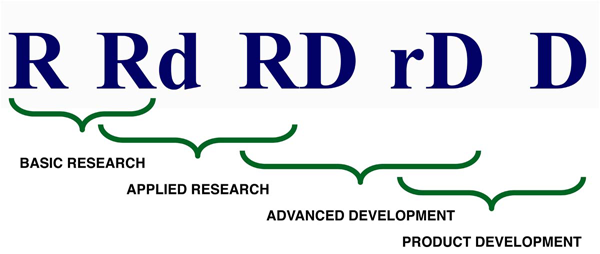The already unclear lines separating research from development are getting even blurrier as more companies allocate some part of their R&D budget to take on riskier projects, and invest in the necessary infrastructure to manage these riskier activities.
New products are now being launched out of recently formed “Innovation” organizations”, and more are coming from existing “Advanced Development” organizations. “Product Development” is no longer the only organization that launches new products.
Several factors have complicated matters for industry observers trying to stay abreast of what might be coming to market by simply paying attention to product development pipelines. These factors include:
- The changing corporate approaches described above.
- The desires of developers to bring solutions to market, not just pieces of a solution.
- The globalization of R&D that has, in effect, decentralized R&D.
- Naming conventions for organizations that differ by industry and country.
The jury is still out as to whether today’s approaches to R&D will prove more productive than historical approaches. Historical approaches to “pre-product development” generally restricted the scope of activities to reduce uncertainty and improve the predictability of key enabling features, capabilities and technologies—and then turned those enablers over to product development.
The Continuum™ of Research and Development

Published on R&D Magazine’s Research & Development website, The Difference Between Research and Development discusses historical approaches to The Continuum™ and contrasts them with the changing corporate practices that are occurring today. The available alternatives for the navigation system of a robotic lawn mower are used to illustrate the key points.
![Goldense Group, Inc. [GGI] Logo](https://goldensegroupinc.com/blog/tangible-innovation/wp-content/uploads/2022/03/logo-corp-darkBlue-65x65.png)